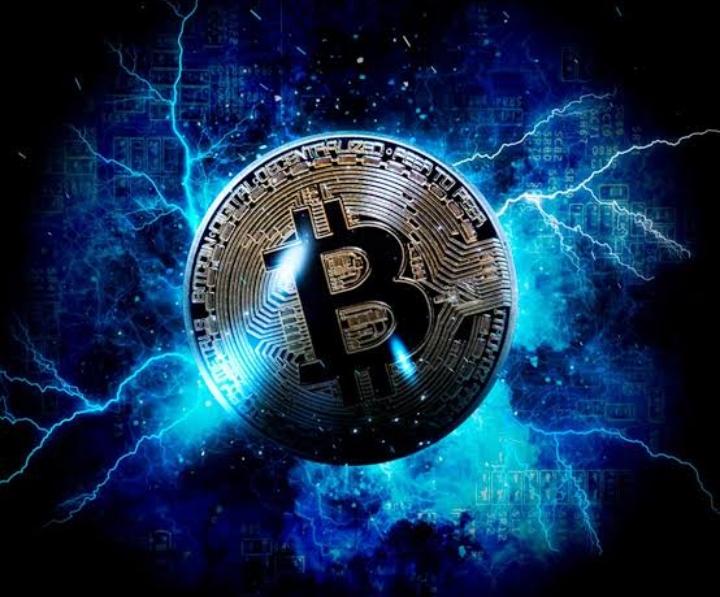The World of Crypto Today: A Revolution in the Making
The world of cryptocurrency has come a long way since Bitcoin’s inception in 2009. What began as an obscure, niche concept championed by a small group of tech enthusiasts has exploded into a multi-trillion-dollar global phenomenon. Today, cryptocurrencies are not only reshaping how we think about money, but also how we invest, transact, and even think about trust and transparency in the digital age. But what does the world of crypto look like today, and where is it headed?
A Quick Snapshot of the Crypto Market
As of 2024, there are over 23,000 cryptocurrencies in existence, with Bitcoin (BTC) and Ethereum (ETH) leading the pack. Bitcoin remains the first and most well-known cryptocurrency, often referred to as “digital gold” due to its scarcity and store of value properties. Ethereum, on the other hand, has pioneered smart contract functionality, allowing developers to create decentralized applications (dApps) and innovative solutions on its blockchain.
While Bitcoin and Ethereum still dominate the market, a growing number of alternative cryptocurrencies (altcoins) have emerged, each with unique features and use cases. These range from privacy-focused coins like Monero (XMR) to stablecoins such as Tether (USDT), which are pegged to fiat currencies like the U.S. dollar to maintain price stability.
The total market capitalization of all cryptocurrencies often fluctuates in the trillions of dollars, reflecting the volatile nature of the space. However, it’s not just retail investors and enthusiasts driving this market—institutions, governments, and major corporations have also taken significant steps into the crypto world.
Institutional Adoption and Mainstream Acceptance
The narrative surrounding crypto has shifted significantly from being a fringe technology to a legitimate financial asset class. Several institutional players have entered the market, bringing with them a level of legitimacy and trust that has helped elevate cryptocurrency from the basement of speculation to the mainstream.
- Corporate Involvement: In recent years, large corporations like Tesla, Square, and MicroStrategy have added Bitcoin to their balance sheets, signaling a shift in how traditional financial players view the asset class. Tesla, for instance, even accepted Bitcoin as payment for cars (though it later reversed the decision due to environmental concerns). Meanwhile, investment firms like Grayscale and Fidelity have launched crypto-focused products, such as Bitcoin ETFs and institutional-grade custody solutions.
- Traditional Financial Institutions: Banks, payment processors, and asset management firms have increasingly embraced cryptocurrency. Major players like JPMorgan Chase, Goldman Sachs, and PayPal have started offering crypto-related services, including allowing customers to buy and sell Bitcoin or integrate crypto payments into their platforms. PayPal’s acquisition of the crypto wallet service, Curv, is a clear indication of its long-term commitment to the space.
- Regulatory Progress: Governments around the world are beginning to take a more structured approach to regulating cryptocurrencies. While regulation remains a gray area in many regions, countries like the United States, the European Union, and even China are exploring ways to regulate crypto markets, issue central bank digital currencies (CBDCs), and prevent illegal activities such as money laundering and fraud.
While regulatory clarity is still lacking in many jurisdictions, it’s clear that governments are beginning to view cryptocurrency as an important part of the global economy. The development of CBDCs (central bank digital currencies), in particular, has gained traction, with countries like China already testing the digital yuan, and others, like the U.S., exploring digital dollar projects.
The Rise of Decentralized Finance (DeFi)
One of the most exciting developments in the crypto world today is the rise of Decentralized Finance (DeFi). DeFi refers to a set of financial services and products—such as lending, borrowing, trading, and insurance—that are built on blockchain technology and operate without traditional intermediaries like banks or brokers.
DeFi platforms use smart contracts, which are self-executing contracts with the terms of the agreement directly written into code. These decentralized applications (dApps) allow users to engage in financial transactions directly with one another, cutting out the need for trusted third parties.
Popular DeFi protocols, such as Aave, Uniswap, and Compound, have already garnered billions in user deposits, proving that decentralized financial systems are not only viable but also increasingly preferred by many. DeFi’s potential lies in its ability to democratize finance, offering access to high-yield savings accounts, decentralized exchanges (DEXs), and peer-to-peer lending to anyone with an internet connection.
However, DeFi also presents its own set of challenges, including high transaction fees on networks like Ethereum, scalability issues, and concerns about security and the possibility of smart contract bugs or exploits.
Non-Fungible Tokens (NFTs) and Digital Art
The world of crypto has also expanded into the realm of art, entertainment, and collectibles with the rise of Non-Fungible Tokens (NFTs). NFTs are unique digital tokens that represent ownership or proof of authenticity of a particular item or piece of content, whether it be art, music, video, or even a tweet.
In 2021, the NFT market exploded, with digital art selling for millions of dollars at auction houses like Christie’s and Sotheby’s. Artists, musicians, and creators have found a new way to monetize their work directly, without relying on traditional distribution channels.
NFTs have the potential to redefine ownership in the digital world, offering creators a new means of expressing and profiting from their work. They’ve also sparked conversations around intellectual property rights, copyright, and digital scarcity. However, the space remains highly speculative, and questions around the long-term value and environmental impact of NFTs continue to be hotly debated.
Environmental Concerns and the Shift to Sustainability
As the cryptocurrency industry continues to grow, so does the environmental impact, particularly due to the energy consumption associated with cryptocurrency mining. Bitcoin mining, which relies on proof-of-work (PoW) to secure the network, requires vast amounts of computational power and energy, leading to concerns about its carbon footprint.
In response, many projects have turned to more energy-efficient consensus mechanisms. Ethereum, for example, has transitioned from PoW to proof-of-stake (PoS) with its Ethereum 2.0 upgrade, drastically reducing its energy consumption. Additionally, a growing number of miners and crypto projects are turning to renewable energy sources, helping to mitigate some of the environmental concerns associated with the industry.
Security and Risk: The Dark Side of Crypto
Despite its many advantages, the world of crypto is not without its risks. The high volatility of many digital assets makes them a risky investment, with prices often swinging wildly within short time frames. This speculative nature has led to significant market corrections, where billions in value can be wiped out in hours.
Security is another major concern. While blockchain itself is considered highly secure, crypto exchanges and wallets are not immune to hacks and breaches. Notable incidents, such as the Mt. Gox hack in 2014 and the recent attacks on DeFi platforms, highlight the risks involved in crypto trading and investment. As the space matures, better security protocols and insurance mechanisms will be essential for building trust and fostering wider adoption.
Looking Ahead: The Future of Crypto
The world of crypto today is vibrant, complex, and rapidly evolving. Whether you see it as a revolutionary technology, a speculative investment, or a passing trend, one thing is clear: cryptocurrency and blockchain technology are changing the way we think about money, value, and trust.
As institutional adoption increases, regulations become clearer, and the technology behind crypto continues to improve, the space will likely grow even more mainstream. The rise of decentralized finance, NFTs, and other blockchain innovations shows that we are only scratching the surface of what crypto can offer.
However, challenges remain—regulation, security, and environmental concerns must be addressed for crypto to fully realize its potential. As we look to the future, it’s clear that the world of crypto will continue to shape our digital economy and financial systems for years to come.



